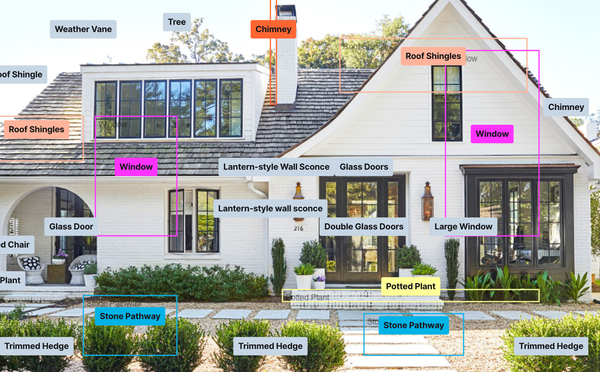Navigating the Risks and Rewards of Build-to-Rent Communities
Build-to-rent communities offer lucrative opportunities for investors, but come along with their own set of risks.

As the real estate market continues to evolve, one trend has garnered significant attention: build-to-rent (BTR) communities. These purpose-built neighborhoods of single-family rental homes have gained popularity among both institutional and individual investors looking to tap into a burgeoning demand for rental housing.
While BTR communities present exciting opportunities for investors, they also come with unique challenges and risks. Understanding both sides of the equation is critical for investors seeking to maximize their returns in this growing asset class.
The Build-to-Rent Boom
Build-to-rent communities emerged as a response to shifting housing preferences. A growing segment of the population prefers the flexibility of renting but doesn’t want to sacrifice the space, privacy, and amenities offered by single-family homes. Young professionals, families, and retirees alike are increasingly choosing to rent homes in suburban-like communities without the responsibilities of homeownership.
This shift is largely driven by affordability concerns, changing lifestyle preferences, and the convenience that comes with professionally managed rental communities. As a result, the BTR model has exploded, with thousands of homes being built across the U.S. specifically for rental purposes.

Use Picket to Evaluate BTR
Picket helps investors analyze and invest smarter in build-to-rent
Try PicketThe Rewards of Build-to-Rent Communities
1. Strong Demand and Stable Rental Income
One of the biggest advantages of BTR communities is the stable demand for rental housing. These communities attract long-term renters who want the benefits of suburban living but with the flexibility of renting. As a result, investors in BTR communities can often enjoy consistent rental income streams, especially in high-demand markets.
Unlike urban multifamily buildings, BTR communities offer tenants space, privacy, and often additional perks like private yards, garages, and community amenities such as pools, parks, or fitness centers. This allows investors to charge a premium for these homes, further increasing the potential for strong returns.
2. Lower Vacancy Rates
BTR communities are known for their "stickiness" — renters in these developments tend to stay longer than apartment dwellers. The average tenure for single-family rentals is longer than for multifamily apartments, meaning less turnover and lower vacancy rates for investors. Residents appreciate the amenities and the community feel, which helps foster longer-term leases and reduces the costly cycle of turnover.
3. Scalability for Investors
For larger investors, the BTR model offers a unique opportunity to scale quickly. By building multiple homes in a single location, developers can streamline construction, reduce costs, and create uniform management processes. For institutional investors or portfolio managers, this scalability makes it easier to manage multiple properties and maintain operational efficiency.
4. New Construction Means Lower Maintenance Costs
Since these properties are new builds, they come with fewer initial maintenance issues. Investors can enjoy the benefits of modern, energy-efficient homes with fewer repair costs compared to older properties. This translates to lower ongoing maintenance expenses, which improves cash flow and return on investment.

Superpowers for Real Estate
See how Picket AI can make owning build-to-rent less daunting
View ProductThe Risks of Build-to-Rent Communities
1. High Initial Capital Outlay
Building a community of single-family rental homes requires a significant upfront investment. For individual investors, this high capital requirement may be a barrier to entry. Even institutional investors need to be mindful of the capital intensity of these projects. Securing financing and managing construction costs are critical to ensuring a successful BTR investment.
2. Market Saturation
While demand for rental housing remains strong, the rapid rise of BTR communities could eventually lead to market saturation in certain areas. As more BTR developments come online, competition for residents could increase, especially if the overall supply of rental homes begins to outpace demand in certain regions. Investors need to be mindful of regional trends and avoid overbuilding in markets where rental growth is slowing.
3. Zoning and Regulatory Challenges
Navigating local zoning laws and regulations can be a major hurdle for BTR investors. Many municipalities have restrictions on residential developments, and some local governments may not welcome the idea of large rental communities, preferring owner-occupied housing developments instead. Investors need to ensure that their projects comply with local zoning and work closely with regulatory bodies to avoid costly delays or legal challenges.
4. Economic Sensitivity
The build-to-rent model, like other real estate investments, can be sensitive to broader economic conditions. A downturn in the housing market or a rise in interest rates could impact both demand for rental homes and the cost of financing new developments. Additionally, changes in local employment markets could influence the ability of renters to afford single-family rental homes, potentially affecting occupancy and rental income. Since build to rent communities are usually located further from city centers and employment, they may prove to be more susceptible to a weakening labor market.

Open {pricing} API
Already have your own system? No problem. Try Picket's API instead.
Developer DocsHow to Navigate the Risks
For investors looking to tap into the growing BTR trend, mitigating risks is key to long-term success. Here are some strategies to help navigate the challenges:
- Conduct Thorough Market Research: Before investing in or developing a BTR community, it's essential to conduct detailed market research. Look for areas with strong population growth, stable job markets, and increasing demand for single-family rentals. Avoid oversaturated markets where competition may drive down rental prices. Avoid communities that are overly rural or too far the biggest regional employers.
- Diversify Across Regions: To protect against market-specific risks, investors should consider diversifying their BTR portfolios across multiple regions. This can help mitigate the impact of local economic downturns or shifts in demand.
- Partner with Experienced Developers and Managers: Working with experienced partners is crucial when navigating the complexities of building and managing BTR communities. From zoning and regulatory challenges to efficient construction and maintenance, the right partner can help investors avoid costly pitfalls and optimize returns.
- Leverage Technology for Management: Effective property management is essential for BTR success, especially for large portfolios. Platforms like Picket, which offer integrated management solutions and data-driven insights, can help streamline operations and ensure optimal resident experiences, minimizing vacancy and turnover rates.
Conclusion: A Balancing Act of Risks and Rewards
Build-to-rent communities are transforming the rental housing landscape, offering unique opportunities for investors to capitalize on the growing demand for single-family rentals. While the rewards are significant, especially in terms of rental income, lower vacancy rates, and scalability, the risks are just as real.
By carefully evaluating markets, understanding regulatory challenges, and leveraging technology and expertise, investors can navigate the complexities of BTR communities and make the most of this emerging trend.
If you’re ready to explore the potential of build-to-rent investments, Picket can help you navigate the risks and rewards with data-driven strategies and scalable solutions. Contact us today to learn more about how our platform supports investors of all sizes in the real estate market.

Make Small Market Investing Easier
Invest in small markets using the most advanced technology in real estate
See How It's Going





